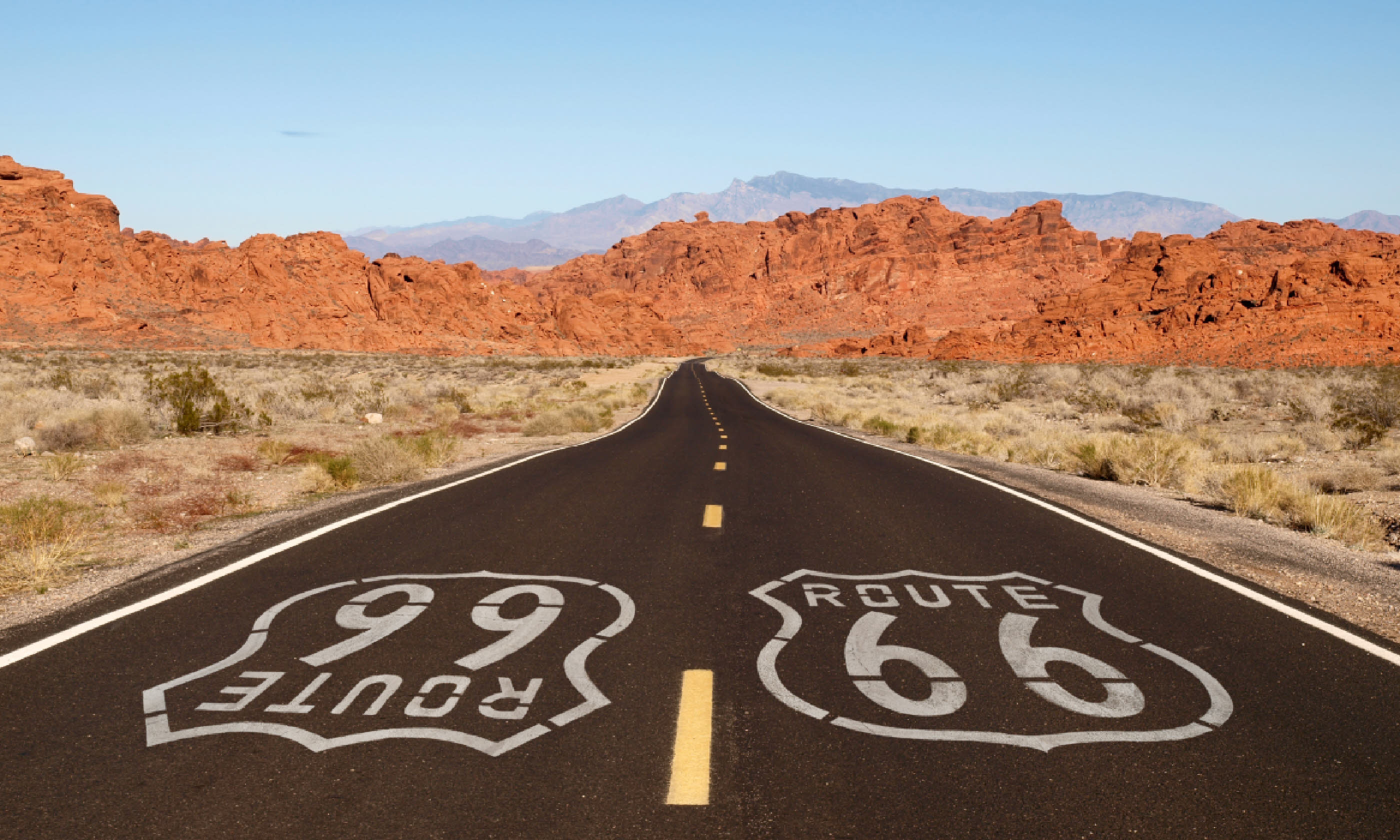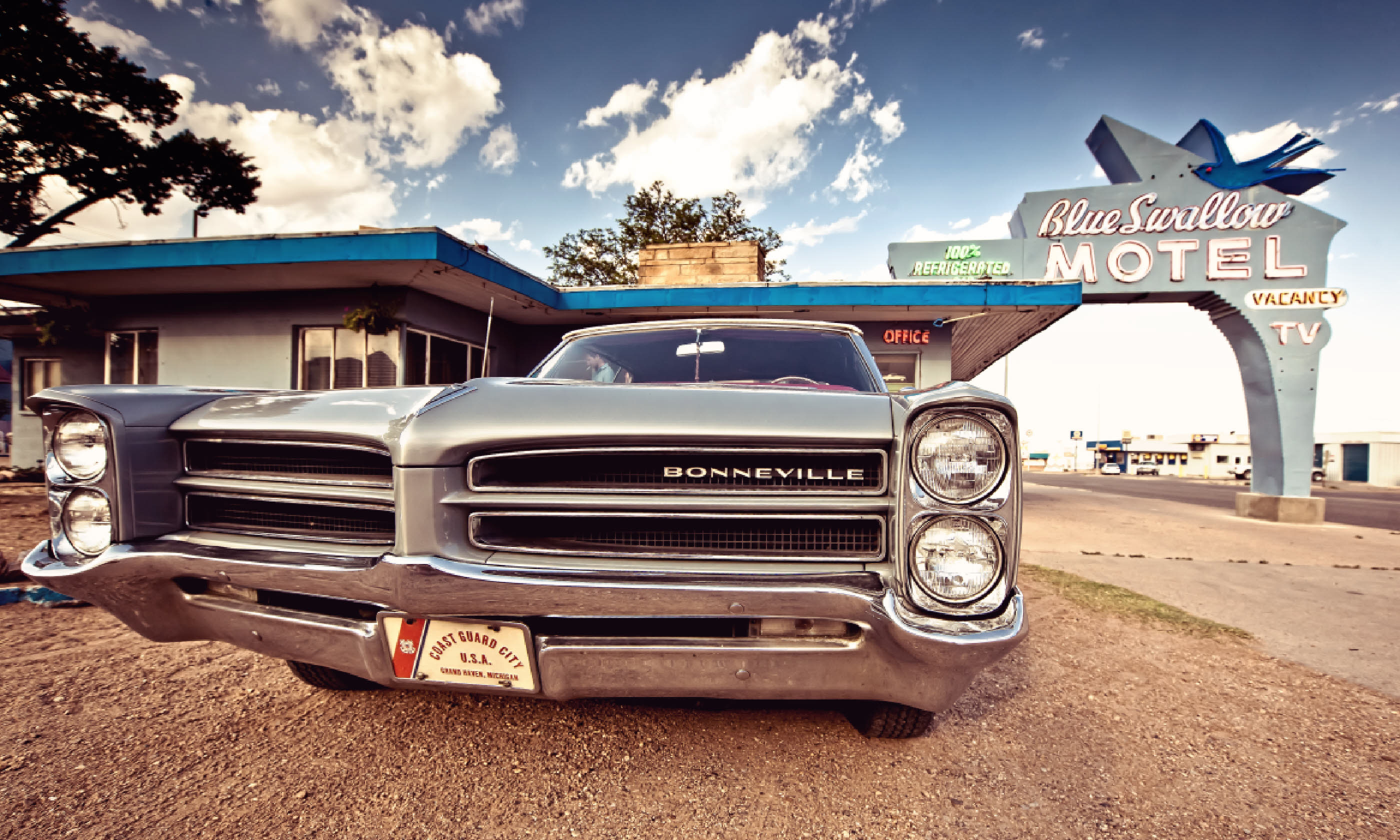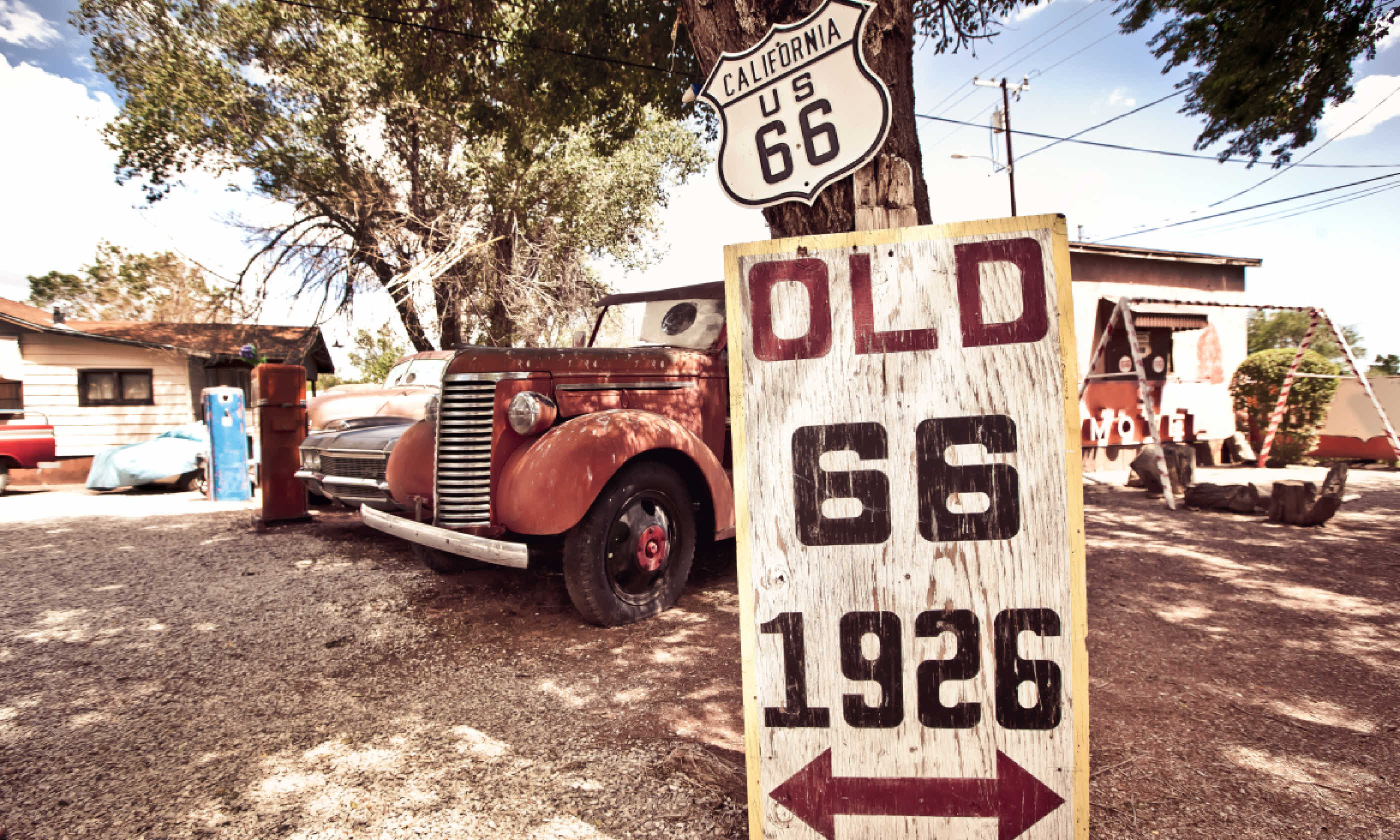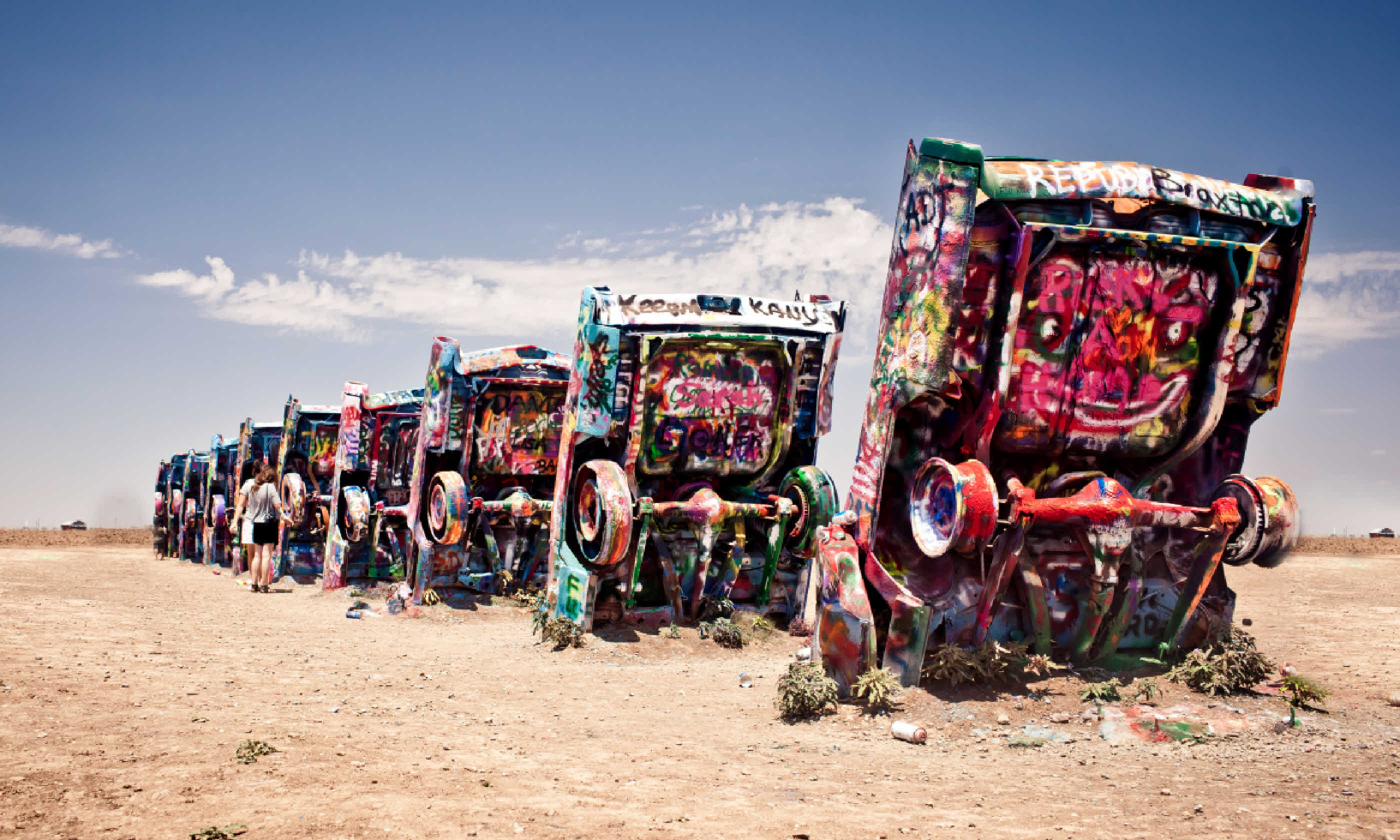
Want to capture the magic and majesty of a road trip? Follow this simple advice from a pro photographer...
The journey is often more important than the destination – especially on road trips. Capturing that on a memory card can be a challenge though, so here’s how to make sure that your road trip doesn’t end up being a series of disconnected, blurry pictures.
Firstly, try to look for that classic establishing shot, that sums up the journey. This might be a desert road stretching into the distance, or a track snaking down a mountainside. This should say what the essence of the road-trip experience means for you.
Learn how to work fast. Even if you’re travelling on your own you don’t want each picture stop to take half an hour. Be prepared to wait though if the shot requires it – sometimes hanging on for the right subject (a person, animal, vehicle) to wander into frame is well worth the effort.

Blue Swallow Motel and old car on Historic Route 66
A big part of the journey will be the local life by the side of the road. Fuel stations, food stalls, roadside temples and even road crews can all make fantastic subjects, as well as the people who just live by the road side.
If I’m driving myself, I leave a rucksack-style camera bag on the passenger seat, where I can easily get to it (you’ll usually have to seatbelt it in). I also have a camera and mid-range zoom ready at all times. I loop the strap around the passenger seat headrest for safety. An unsecured camera will inevitably end up flying onto the ground or – worse – causing an accident.
These can create an amusing pic or even pass as social comment. Try to photograph them in context, showing the rest of the road in the frame to give an idea of the sign’s connection to the road.
Wander off the main highways: rural backroads often pass through more beautiful scenery and give you more chance to stop. Look on maps for scenic routes – these will often offer more rewarding views.

Old Route 66 signs (Shutterstock)
The danger of being vehicle-bound is that you can be cut off from the locals. Make time to meet and snap people who live, work or even travel down your chosen road. This will give your pictures a greater human dimension.
When photographing the road, try to include something characteristic to give a sense of place. This might be an iconic car, a local flag or a road sign.
This will help to make your photos unique. Try to shoot an essence of the journey and what it means to you. Imagine if you were travelling with a friend; what would you point out to them? These are the things you should then try to photograph.

Famous art installation Cadillac Ranch
When shooting from a moving vehicle use as fast a shutter speed as possible to avoid camera shake, as well as using a continuous focus mode. Photographing things further away will minimise the effect of motion blur.
Some lenses have vibration reduction systems built in. These can also reduce camera shake from moving vehicles. Look for the initials ‘VR’ on a Nikon lens or ‘IS’ (Image Stabilisation) on a Canon.